onEarth Blog: Red knots in danger from all sides


by Meghan Kolk, Wildlife Biologist
As part of the Beach Nesting Birds team last season, I had grown accustomed to scouring the beach daily for signs of birds: tracks, scrapes, nests and eventually adorable chicks. On my free time, my beach walks are spent combing the beach for various treasures. Yesterday, I had a new reason to walk the beach and I had to re-train my focus to something that never caught my interest before. It was my first survey for the endangered beach plant, seabeach amaranth (Amaranthus pumilus). Continue reading “Beach Plants Need Love, Too”
NewsWorks ran a feature story on red knots and the incredible team of international volunteers who make Conserve Wildlife Foundation’s past two decades of scientific surveys possible.
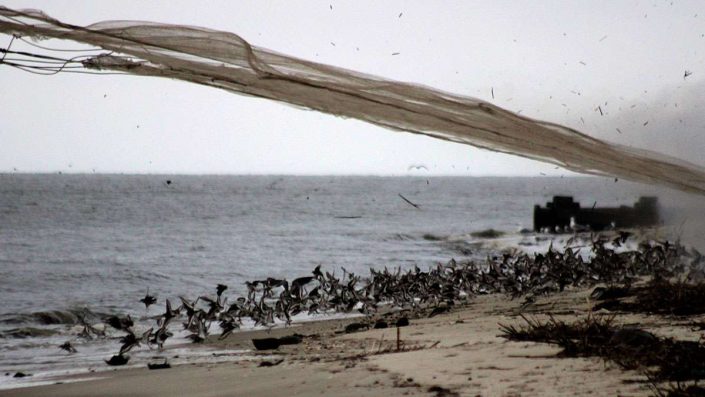

What do CWF biologists do in their spare time?
Higher than usual tides last week caused an extraordinary stranding event of Horseshoe crabs all along the Delaware Bay. From Fortesque Cumberland County to beaches in Cape May County horseshoe crabs were washed up into the marshes, tidal flats, roads and other areas where they were unable to get back out to the water. ReTurn the Favor coordinators jumped into action and after an initial survey of the strandings organized rescues at the various beaches. On Saturday a team met at Pierce’s Point at sunset so as not to disturb feeding shorebirds. The group was made up of ReTurn the Favor coordinators from the Wetlands Institute and volunteers including CWF staff. The group was able to move ~3,000 crabs back to the water in a few hours. Over the next few days, rescue efforts continued at Pierce’s Point and other beaches. Allison Anholt from the Wetlands Institute reports that 7,900 crabs total were rescued at Pierce’s Point. Thousands of more crabs were rescued at other beaches over the weekend, due to the dedication and help from the various groups and wonderful volunteers involved.
Efforts like this show that caring, dedicated people can make a difference. Thanks to all involved!
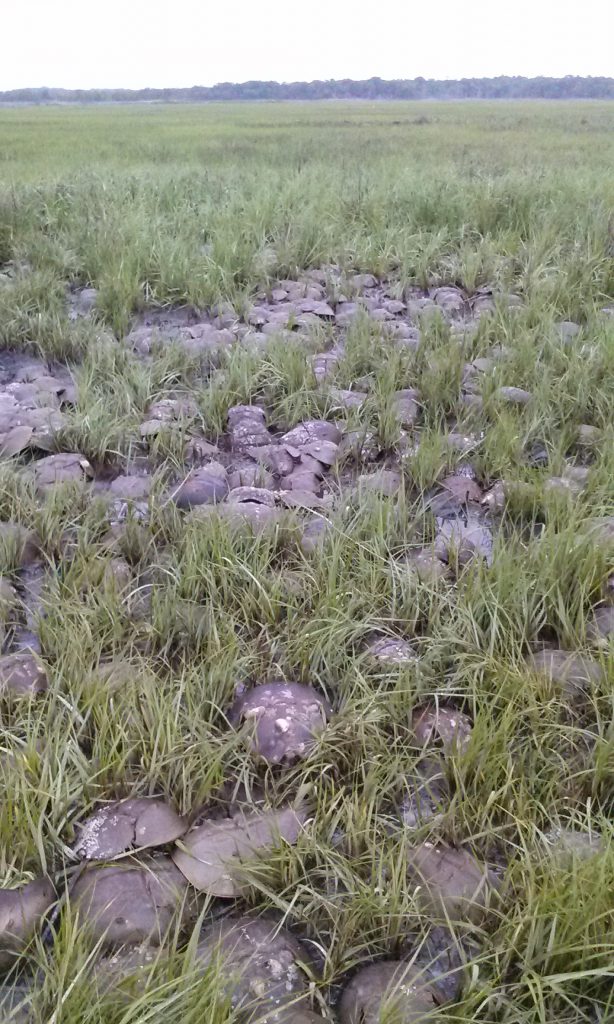
To Learn More and get involved:

NJ Advance Media reporter Michael Sol Warren highlighted 17 endangered species in an insightful story looking at what can be done to save New Jersey’s rare wildlife. Conserve Wildlife Foundation has long focused on many of these species – from the piping plover and the bobcat to the bog turtle and the Pine Barrens tree frog – through monitoring and surveys, habitat restoration, and public engagement.
Read the story at NJ.com, then learn more through our online field guide.
By Emily Heiser, Wildlife Biologist
Many piping plover and American oystercatcher pairs have been busy laying their eggs over the last few weeks. As beach nesting bird biologists, we invest a lot of time into every pair at our sites. We revel in their successes and feel defeated at their losses. Unfortunately, many nests did not fare well in the April 25th Nor’easter that was coupled with new moon tides. Luckily, it is early enough in the season that all of them have begun, or will soon begin, attempting new nests.
The breeding habitat of the American oystercatcher in New Jersey consists of coastal beaches, inlet systems, and salt marshes. Population estimates in New Jersey suggest 350-400 breeding pairs can be found here from March through August. Much of the monitoring and research done with American oystercatchers in New Jersey takes place on the coastal beaches where other beach nesting birds, such as piping plovers, least terns and black skimmers, are found. In 2016, more than 120 breeding pairs of beach nesting American oystercatchers successfully fledged 83 chicks. This was an especially productive year for those pairs and productivity levels were well above the target goal of .5 chicks per pair.
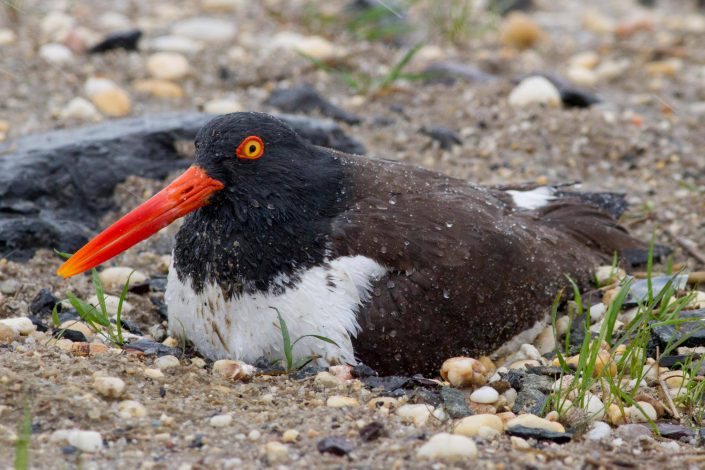
Oystercatchers arrive back on their breeding grounds here in New Jersey in early March to set up breeding territories and begin nesting. Once paired up, adults typically lay one to three eggs. Both the male and female will take turns incubating the nest for 28 days. Once chicks hatch, they are semi-precocial, which means they are born in an advanced state, but are still reliant on adults for food and protection. Oystercatcher chicks are fledged (or able to fly) 35 days after hatching. After fledging, most Oystercatchers migrate to the southeast, but a wintering population does remain here in New Jersey.
American oystercatchers are listed as a Species of Special Concern in New Jersey. A “Species of Special Concern” is a status determined by the New Jersey Division of Fish & Wildlife and applies to species that have an inherent threat to their population or have evidence of recent population declines. Since American oystercatchers share the same habitat as other endangered or threatened beach nesting birds (piping plovers, least terns, and black skimmers), they also share the same threats to their nests and young. Human disturbance, a host of predators, and flooding events, such as the one that took place last week, are just some of the many threats beach nesting birds face daily.
The Conserve Wildlife Foundation of New Jersey has long partnered with the New Jersey Division of Fish and Wildlife’s Endangered and Nongame Species program in the monitoring and management of New Jersey’s endangered beach nesting birds. Fencing and signage are placed in nesting areas to alert beachgoers to the presence of nesting American oystercatchers and other beach nesting birds. Throughout the summer, CWFNJ and partners will be out on the beaches monitoring and collecting data that will be used to track population trends and identify threats to oystercatchers and their young.
Emily Heiser is a wildlife biologist for Conserve Wildlife Foundation of New Jersey.
LEARN MORE
by Jenae Shaw, Education Coordinator
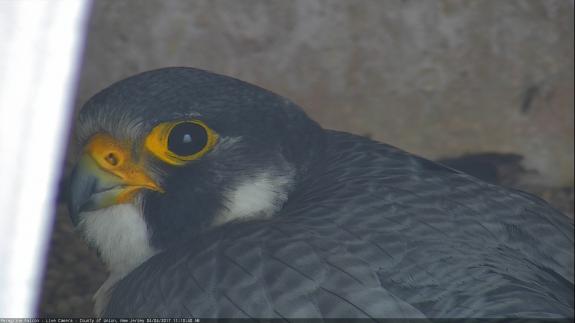
The peregrine falcon pair that took up residence on top of the Union County Courthouse in Elizabeth NJ laid their first egg on March 22. Shortly after, an intruding peregrine falcon caused the pair to defend their territory, leaving the resident female with injuries following the altercation that lasted on and off for several days. Despite her injuries, the resident female laid a second egg. Periodic sightings of the intruder, who was confirmed as female 91/BA (Cadence) from Rochester NY, continued throughout the week. On March 29 following an excruciating battle – for those watching and certainly for the falcons involved – the intruder was chased off.
Territorial battles like these force peregrine falcons to exert a tremendous amount of energy and undergo a great deal of stress – neither of which are beneficial to the eggs. Although male and female peregrine falcons take turns incubating the eggs, the female peregrine falcon is typically responsible as the primary means of incubation. Unfortunately, constant provocation from the intruding female kept the resident female off the eggs for extended periods of time.
On April 4th around 5:30 pm, Kathy Clark, ENSP Zoologist, was watching the live feed and witnessed 91/BA hit the resident female with a devastating blow – she has not been seen since.
The intruding female, having successfully won the territory and the affection of the resident male, did not waste any time familiarizing herself with her new surroundings. In a surprising turn of events, 91/BA adopted the 2 eggs from the previous female and laid 3 more of her own.
Unfortunately, we now know that the two eggs laid by the former resident female are not viable and will not hatch. The adults will continue to take turns incubating all five eggs. Incubation appears to be very consistent, so if all goes well hatching should take place sometime between May 30 – June 3. Stay tuned!
by Ben Wurst, Habitat Program Manager
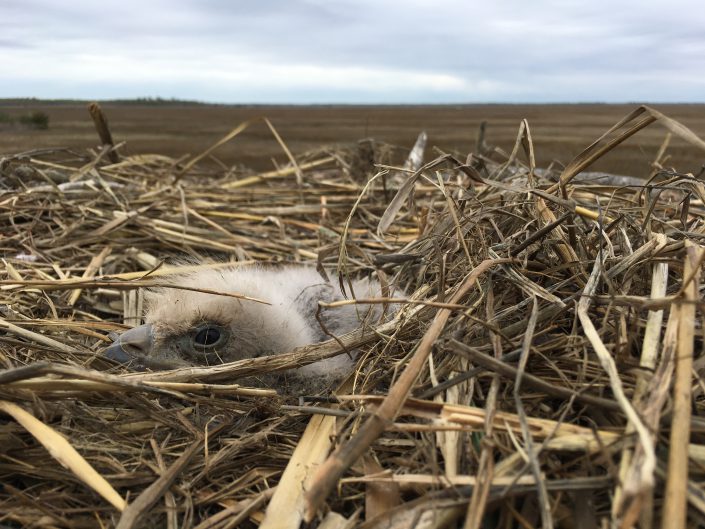
Continue reading “Photo from the Field”
NJTV News recently covered the continuing recovery of ospreys in the Garden State by visiting the nesting pair at Long Beach Island Foundation for the Arts & Sciences. CWF’s Ben Wurst and David Wheeler joined NJTV for this inspiring video and accompanying story.
LEARN MORE
By Allegra Mitchell, CWF Biologist
Waterloo Village in Byram Township, Sussex County is more than a tourist attraction and local gem, it is also home to the largest cross-road amphibian migration in New Jersey. Each spring, frogs, toads, and salamanders stir from their hibernation to make their way to their breeding sites. Some of these sites, like the one at Waterloo, are vernal pools – small, temporary bodies of water that appear in early spring as snow melts and rain and groundwater gathers, and disappear throughout the summer as they evaporate. The ephemeral nature of these pools can’t support fish, which would prey on amphibian eggs and larvae. Vernal pools therefore provide some protection for amphibian offspring, with many species such as wood frogs and spotted and Jefferson salamanders – both of which are listed as New Jersey species of Special Concern – relying exclusively on these vernal pools for breeding.
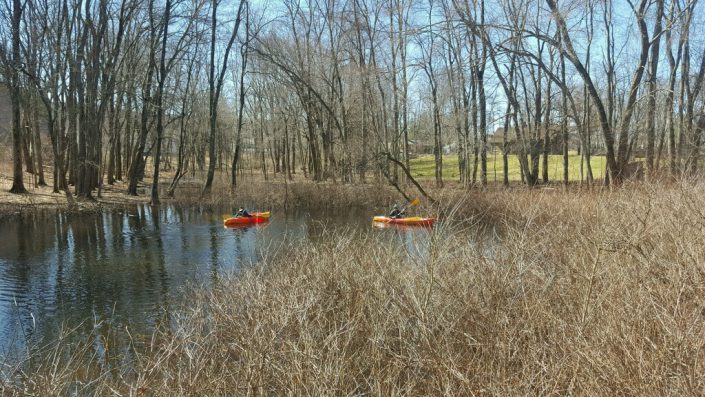
The greatest challenge for amphibians breeding at Waterloo Historic Village is crossing Waterloo Road. Living in the most densely population state takes a toll on many species of wildlife in the form of habitat loss, degradation, and fragmentation. Each year, many amphibians become victim to vehicular collision as they move from their hibernation sites across Waterloo Road to the vernal pool in which they reproduce. Amphibians may be disproportionately affected by vehicle-caused road mortalities compared to other wildlife because of their tendency to migrate en masse to breeding sites. These annual road mortalities can have devastating effects on amphibian population sizes, especially for the local at-risk salamander populations. In fact, as little as about 10% annual risk of road mortality in spotted salamanders can lead to the local extinction of an entire population.
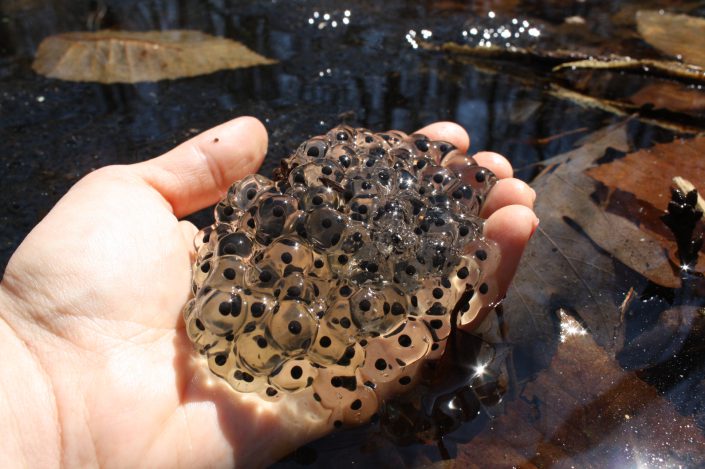
To address this problem, the Conserve Wildlife Foundation of New Jersey (CWF) and the New Jersey Endangered and Nongame Species Program (ENSP) organized amphibian rescue efforts. Since 2002, dedicated volunteers have assisted frogs, toads, and salamanders across Waterloo Road during the busiest migration nights. This aid has proven effective in reducing amphibian road mortalities, but it is not a permanent solution to the problem. Efforts are underway to construct under-road tunnels to help guide amphibians safely across Waterloo Road. These tunnels will provide safe passage for these critters throughout the breeding season, including on their migration back into the woods where they will hibernate. Since this return migration is more sporadic and less weather-dependent than migration to the vernal pool, it is much harder to protect amphibians as they make their way back to the forest.

This year, CWF scientists have begun the initial phases of research to understand current amphibian population sizes and the impact of vehicle traffic on these animals at Waterloo. Scientists and volunteers have been out 7 days a week since amphibian migrations began in late February to tally daily roadkill on Waterloo Road. This study will be used to evaluate changes to frog, toad, and salamander populations as the under-road amphibian tunnels are installed. CWF scientists have also conducted egg mass counts in the vernal pool at Waterloo Village to estimate the current population sizes of the different amphibian species in the area. Having this knowledge will allow CWF to improve on future projects to minimize road-related human-wildlife conflicts.

Along with improving conditions for amphibians in this location, CWF’s work at Waterloo Village will serve as an example of New Jersey statewide initiatives to reconnect wildlife habitat as a part of the Connecting Habitat Across New Jersey (CHANJ) program. The goal of CHANJ is to make our state landscapes more permeable to wildlife movement so that all of New Jersey’s residents – human and wildlife – will have the space they need to thrive.
In an effort to bring people and wildlife together in a positive way at Waterloo Village, CWF scientists are leading educational walks for the public and local schools. Through hands-on interaction, local residents can learn about and appreciate the remarkable wildlife right in their own back yards and what they can do to support conservation efforts.
All New Jerseyans can help wildlife this season by planting native plants for their gardens, building bat boxes where bats can roost, and, of course, by keeping an eye out on the roads, especially on warm, rainy nights when amphibians might be migrating.
LEARN MORE
Allegra Mitchell is a biologist for Conserve Wildlife Foundation of New Jersey.